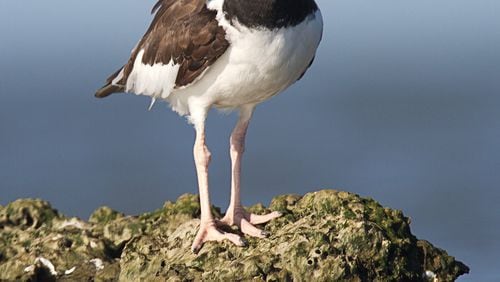Georgia’s beautiful coast is only 100 miles long, but its patchwork of barrier islands, wide sandy beaches, salt marshes, mudflats, tidal creeks, maritime forests, inlets and estuaries are of worldwide ecological importance.
The latest confirmation came last month when the Western Hemisphere Shorebird Reserve Network (WHSRN) designated Georgia’s barrier islands — from Tybee to Cumberland — a landscape of hemispheric importance for shorebirds. It’s the network’s 100th designated site of importance for shorebirds in 15 countries.
The WHSRN is a 32-year-old “conservation strategy” aimed at protecting breeding and nesting habitats, wintering grounds and migratory rest stops of shorebirds — sandpipers, plovers, dunlins, dowitchers, willets, sanderlings, red knots, ruddy turnstones, whimbrels, curlews, oystercatchers, yellowlegs and others.
For several of those birds, Georgia’s coast is a significant over-wintering area. It hosts, for instance, the largest concentration of semi-palmated plovers (a species of concern) and a large concentration of piping plovers, a threatened species, in winter.
During spring and fall, the coast is a vital stopover for migrating shorebirds, many of which depart in February from winter grounds in Central and South America to summer nesting grounds in the Arctic — and then make the reverse trip in fall. The stopover population of red knots migrating south in fall has been estimated at 23,400 birds on Georgia’s coast.
With an abundance of nutrient-rich food resources — fiddler crabs, clams, marine worms, crustaceans and horseshoe crab eggs (in spring) — the coast provides the traveling shorebirds with fuel to help them continue their long journeys.
And for some shorebirds, the coast is prime nesting ground. It’s a key breeding area, for example, for the American oystercatcher, a species of special concern.
IN THE SKY: From David Dundee, Tellus Science Museum astronomer: The Geminid meteor shower, visible next week, peaks at 50 meteors per hour on Wednesday — in the east from about midnight until dawn.
The moon will be last quarter on Sunday. Mars and Jupiter — the only visible planets now — are low in the east just before sunrise. Mars is near the moon on Wednesday; Jupiter near it on Thursday.
About the Author






